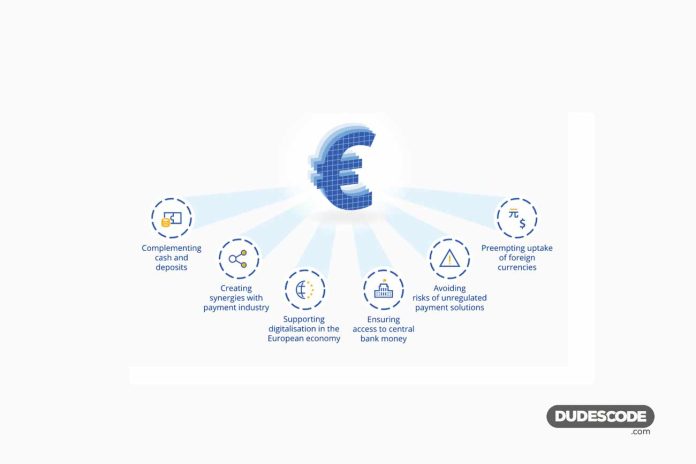Big news, Fabio Panetta – Member of the Executive Board of the European Central Bank, spoke about the Digital Euro project as a project that will strengthen monetary sovereignty and facilitate digital payments across the European Union
In 2026, the euro could get its digital “double”, a stablecoin that is developing at the European Central Bank (ECB). The digital euro will increase the stability and independence of the European Union’s monetary system and increase the efficiency of the digital payment system, said Fabio Panetta, a member of the European Central Bank’s executive board, during a speech at the Irish National University (NCI) in Dublin.
The digital euro will open up the possibility for everyone to use the common currency for exclusively digital payments, anywhere, in an easy and secure way. Unlike cryptocurrencies, which are speculative in nature, this currency would be directly pegged to the euro, as a kind of stablecoin – although Panetta warned that even such coins could lose their “anchor”, as happened last week with TerraUSD– om.
Currency for all and in the public interest
To prevent such situations, the European Central Bank will be behind the digital euro. This would give this digital currency confidence, and be designed as secure and in the public interest. Panetta also points out that in a growing digitalized environment, the digital euro should facilitate digital payments, and give everyone in the market a chance to stay “in the game”. Thus, smaller intermediaries in the financial markets, which so far have not been able to keep up with the innovation of big players, would get a new opportunity.
This payment system would be free, easy and accessible to anyone and everywhere, said Fabio Panetta. But in order to succeed in this, users must see in it that it benefits them, that is, that it has advantages over current payment methods. It must also be accepted everywhere – ideally by all eurozone retailers, both online and in physical stores. This was shown by preliminary research, in which respondents said that the ideal digital currency would also allow P2P payment (direct transfer of money to friends) with one click, regardless of which platform or bank the payer and recipient use.
The case for #Stablecoin #DigitalEuro @ecb Fabio Panetta pic.twitter.com/yZO2BvGrzL
— National College of Ireland (@NCIRL) May 16, 2022
In order to implement the euro digitization plan, the ECB set up a two-year working group last year to explore what will be priorities in developing a new digital currency. The project could then be launched by the end of 2023. In the second phase, technological solutions will be tested and a business environment necessary for the widespread adoption of the digital euro will be created. This could take about three years, so the digital euro could therefore come to life in 2026.
READ MORE
- Will Samsung make electric cars?
- Artle – New Game For Art Lovers
- An ecological clock has been created, with a case made of coffee grounds
- Nvidia will pay 5.5 milion dollars for selling graphics cards to cryptocurrency miners
- USB-C port on other Apple devices as well
- Twitter’s legal team accuses Mask of violating the secrecy agreement



